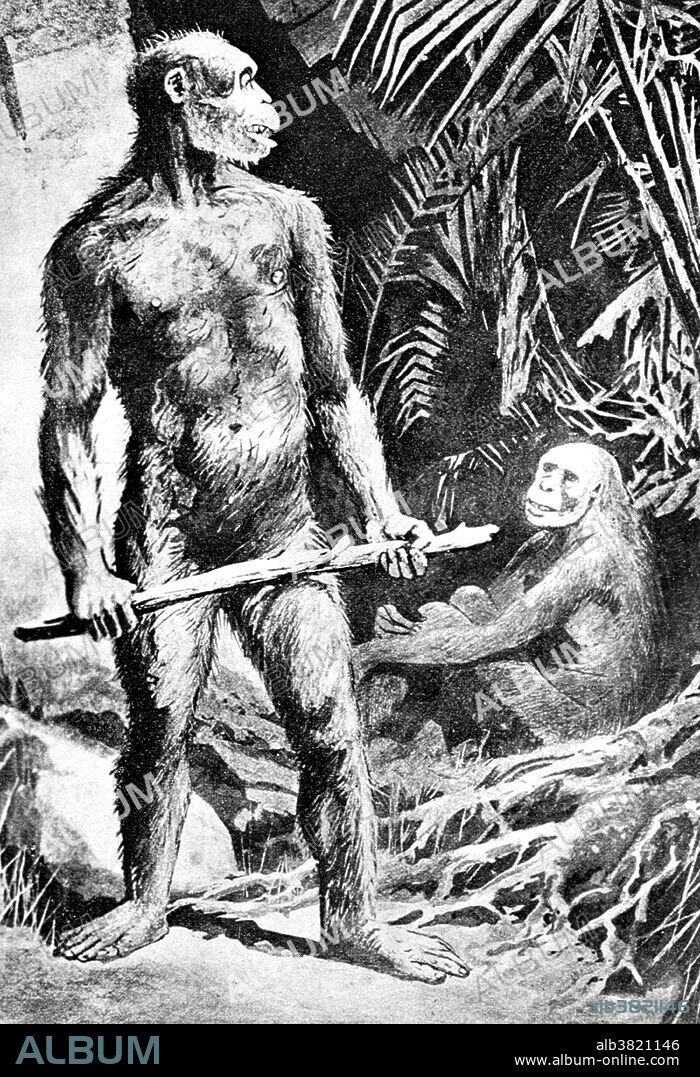alb3821146
Prehistoric Java Man, Homo erectus

|
Ajouter à une autre Lightbox |
|
Ajouter à une autre Lightbox |



Avez-vous déjà un compte? S'identifier
Vous n'avez pas de compte ? S'inscrire
Acheter cette image.
Sélectionnez l'usage:

Titre:
Prehistoric Java Man, Homo erectus
Légende:
Voir la traduction automatique
The Java Man was an apelike form of Homo sapiens from the middle Pleistocene having a small brain capacity, low cranial vault, and massive brow ridges. Java Man is the common name of fossilized Homo erectus remains found in 1891 at Trinil, Java. Its discoverer, Eugène Dubois, gave it the scientific name Pithecanthropus erectus, a name derived from Greek and Latin roots meaning upright ape-man. The current consensus of anthropologists is that the direct ancestors of modern humans were African populations of Homo erectus (possibly Homo ergaster), rather than the Asian populations exemplified by Java Man and Peking Man. Illustration originally captioned: Pithecanthropus, Java Ape Man (Osborn) from unidentified source, 1916.
Crédit:
Album / USGS/Science Source
Autorisations:
Modèle: Non - Propriété: Non
Questions sur les droits?
Questions sur les droits?
Taille de l'image:
3600 x 5263 px | 54.2 MB
Taille d'impression:
30.5 x 44.6 cm | 12.0 x 17.5 in (300 dpi)
 Pinterest
Pinterest Twitter
Twitter Facebook
Facebook Copier le lien
Copier le lien Email
Email
